Back in April of 2008, Practical Sailor rounded up 11 fans from seven manufacturers. From Caframo, we tested the Camano, Bora, Kona, Sirocco, and Ultimate. Also in the lineup was the Fan-Tastic Vents Endless Breeze, Hellas Turbo Fan, HotWires Port Fan, MarinePros Tornado Fan, and oscillating fans from SeaBowld and West Marine. All were specifically marketed for marine application. Prices ranged from $27 to $100.
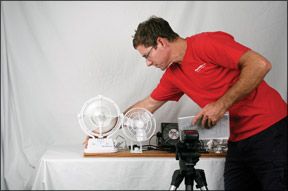
By the end of the initial blowfest, testers came up with five Recommended fans and one Budget Buy. The testers favorite, at that point, were Hellas Turbo Fan, a familiar, efficient design that generated a moderate breeze with very little noise, the heavy-duty Kona (held back only by its price and metallic grill face); the sophisticated Sirocco (featuring four different timer settings); and the Port Fan, a quiet compact unit designed to fit in an opening portlight. The oversized Fan-Tastic Vent, essentially a small box fan, was suggested for dockside use, but did not make our recommended list because of its higher power requirements.
When PS revisited fans in August 2009, Caframo had brought two new fans to the market: a quieter and more efficient 748 Bora fan with a new blade design and a weatherproof version of the Kona. The quieter, more efficient Bora moved up into the Recommended group, but the new Kona, which had just been introduced, was still untested. The Budget Buy, a $27 oscillating fan from SeaBowld was no longer available, opening the door for Caframos $40 Ultimate fan to earn the Budget Buy title.
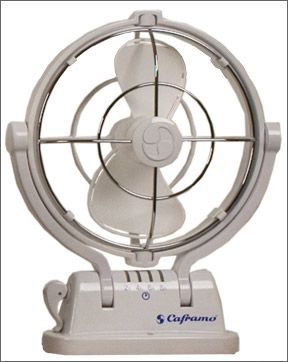
In this update, we report on the new Kona, along with the other remaining contenders, all of which have been running continuously for six months, or 4,320 hours.
WHAT WE TESTED
The protocol for the six-month test was the same used for the initial evaluation. While attached to a mounting board and plugged into a 12-volt power source, the fan was run at its available speeds and tested for sound and wind output and current draw. The sound was tested at 3 feet (directly in front of each fan) and at 1 foot (from the side, pointed at the motor housing), using a Radio Shack digital sound-level decibel meter attached to a camera tripod. It was set for the “A” weighing level, which eliminates low frequencies below 500 Hertz.
The air output, or wind speed, was tested in feet per second using a Kestrel 1000 pocket weather meter attached to a camera tripod and set 3 feet in front of the fans. Testers were well aware that simply measuring wind speed coming off a fan is a relative indicator of forced air movement, and the reading can be different from the total volume of air or CFM (cubic feet per minute) that manufacturers use to rate their fans. Current was measured at 12.3 volts with an Actron digital multimeter with accuracy /- 1.2 percent.

What We Found
The new Kona impressed testers with its robust, spray-proof motor housing, quiet operation, and solid output. The metal grill on the original has been replaced with a plastic one, but the mount itself is powder-coated aluminum, which can be susceptible to coating failure in a marine environment.
One of the typical failure points on 12-volt fans is the on-off switch, and since beginning this test, we’ve had two switch failures. The on/off/speed switches on one of our original Bora fans and the on/off/variable speed switch on one of our original Kona fans both failed after less than 200 hours of operation. Although the electronic switch on the current Bora model looks unchanged, testers noted that Caframo has changed the Konas variable rotary switch to a three-position rotary switch. The Ultimate, Hella, and Port Fans all use simple mechanical contact switches, while the Sirocco uses an electronic timer switch. Because the switch on the Sirocco allowed only continuous operation for a maximum of eight hours (convenient if you’re the kind who forgets to turn the lights off), it has been operating for just less than 1,000 hours, far less than the others.
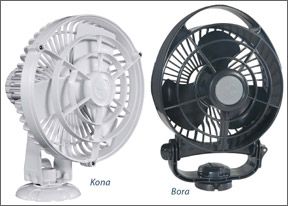
At this stage in the test, were beginning to see some fatigue in the motors and bearings. Although output remains undiminished in all of our survivors, two of the most efficient fans, the Bora and the Hella, temporarily rumble when they are switched off and started up again. Our only complete failure was the Ultimate fan, which started rattling after 2,860 hours and died two days later.
Conclusion
For a conventional cabin fan, the choice comes down to the Hella (our Best Choice in 2000) or the new Bora. Caframo has clearly made an effort to give Hella a run for its money in terms of efficiency and noise. Like the Hella, its Bora is guaranteed for 5,000 hours, but our experience with the electronic switches raises some concern. The most significant difference between the two is the lack of a back cover on the Hella, which improves wind flow and makes the fan easier to clean, but also leaves it vulnerable to fingers and other objects that could harm the motor. If it’s quiet you want, the little Port Fan isn’t a wind machine but it is almost silent, and we don’t expect it to fail any time soon. The Sirocco has an elegant shape and a powerful two-blade design (the same found in the Ultimate), but wed only opt for this if we were intent on having a timer switch.
While the powerful Ultimate might seem a bargain, its unprotected blades are vulnerable, and when you factor in its shorter lifespan, the dollar savings, if any, is insignificant.





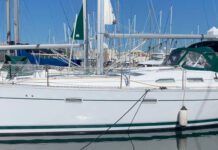







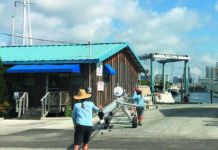

























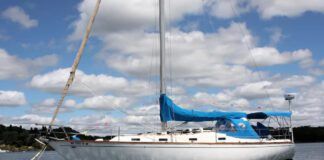
Darrell,
You need someone to read your articles before they’re published or posted. Every email contains an article with numerous mistakes, which are annoying and amateurish. I would think you’d have more pride than your writing shows.
In the article about fans, here are just two examples:
“…At this stage in the test, were beginning to see some fatigue in the motors and bearings.” ”
“…but wed only opt for this if we were intent on having a timer switch.”
Poor guy needs a life.
Thanks for the article about Fans. We also tested many in out boat traveling in the hot Greece summers. We were so please with the our new fan running on a rechargeable battery and completely silent that we now have 4 of these. In The Netherlands it is called Eurom. No wires (only to charge), 4 speeds and running for 6-15 hours and completely silent. We feel that the 1st speed is enough for a long night sleep. These are sold in several countries under several brands in The Netherlands we bought it at Mediamarkt for only €29 and in Greece I saw if for €49. Every body I have shown it were amazed. If you want me to send you a picture then let me know.
Yes, we live in Hawaii and would be very interested in a picture of the fan. Aloha!